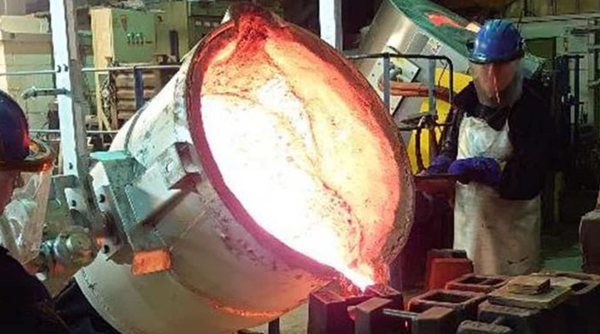you may have heard3D printing of plastic and metal. But did you know that sand is also a potential material for 3D printing? In fact, it is a cost-effective solution for many industries and particularly complements traditional sand casting. But how does 3D sand printing work and how does traditional sand casting benefit from this additive process? We take a closer look at these questions in this article.
to understandThe importance of 3D sand printing for casting, first we need to understand the traditional sand casting process. Sand casting is a casting process used to produce final parts made from metals and other materials. The mold into which the liquid material is poured is made of high temperature resistant sand. The original casting process has been tested and proven for thousands of years, dating back to approximately 3,200 BC. Of course, the manufacturing process has gone through several stages of development, but the basic concept has not changed.


During the sand casting process, a liquid material (usually metal) is poured into a pot of sand (Photo credit:BigRep)
The process begins with a two-dimensional drawing of the object to be manufactured. Based on this concept, a template is made, but if it is used for the final metal part, its dimensions are increased to account for shrinkage. Additionally, the model must include pouring channels. The prepared negative mold is pressed into a sand-filled casting box. An image (mold) of the model is then formed in the sand. Pour the liquid materials (aluminum, steel, magnesium, iron) into this mold and remove it immediately after cooling. In the final phase, the gate must also be removed.
Although sand casting has proven itself with detailed results, the process steps above show that it is a complex process with many steps. It isWhere 3D printing comes in. The combination of traditional casting and additive manufacturing makes the process more efficient because the mold or core of the part with the cavity is digitally designed with CAD and manufactured by 3D sand printing. This eliminates the steps of designing the model, creating it and printing it in a molded frame. In short, 3D printing provides a shortcut to achieving desired goals, saving time, costs and resources.
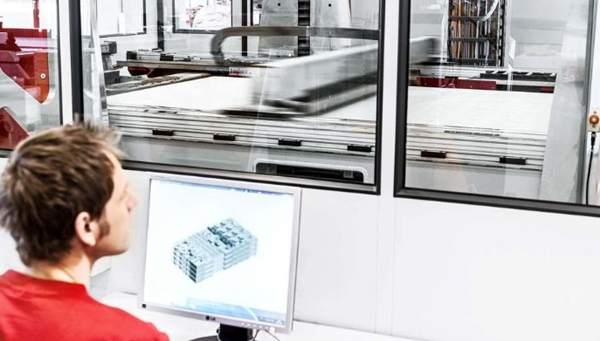

Before printing, passCAD creates shape designs (Image source: voxeljet)
As we discuss in more detailBefore we begin with the many benefits of 3D sand printing, let’s first focus on 3D sand printing itself. Quartz sand used for 3D printing is not the traditional sand found in sandboxes or on beaches, and is primarily composed of quartz particles. Different types of sand can be used depending on the casting alloy of the final part. SH-F01 quartz sand is matte black, while SH-P14 is beige, usually sand colored. Both have high heat resistance and fastness. SH C052 synthetic sand can also be used. It is ceramic based and has similar properties to the types mentioned above. In 3D sand printing, the sand is then made into a mold for binder jet sand casting.
Advantages and applications
with othersCompared to 3D printing technologies, binder jetting is considered particularly effective. This applies not only to the processing of polymer or metal powders, but also to the processing of sand. This means that binder jetting not only avoids many steps of traditional sand casting, but also produces particularly efficient molds. Time saved in production can also be converted into financial gains. For example, in-mold printing can reduce costs by up to 75% throughout the production process.
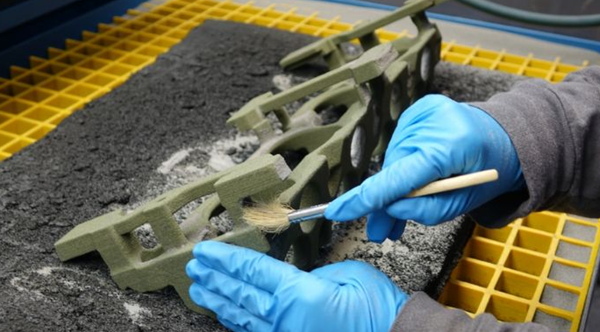

Machine Operator CleaningSand on a 3D printed core (Photo credit: Hoosier)
The 3D models are designed on a computer, which facilitates personal modifications and adaptations. Complex geometries can also be fabricated and produced at any scale. Another advantage of binder jet printed sand molds is that they have better dimensional accuracy and can be produced in varying quantities. This also provides a competitive advantage as customer requirements can be better met.
In addition to saving time and money, sand printing also saves resources. No more manipulating materials to create physical models. Since additive processes primarily use only the materials actually needed, less waste is produced. Quartz sand is considered an environmentally friendly material with almost unlimited quantities of unused prints.The powder can also be partially reused. In this sense,3D sand printing contributes to more sustainable production.
3D sand printing can be considered for molds used in various applications, especially those that require efficient production of complex parts. This is the case in the automotive or aerospace industries, where specific applications such as wheels or propellers are used. For example, British foundry Boro Foundry used 3D sand printing to produce spare parts. The technology can also be used to create designer furniture, artwork and catering. It can be used to produce prototypes and small batches.
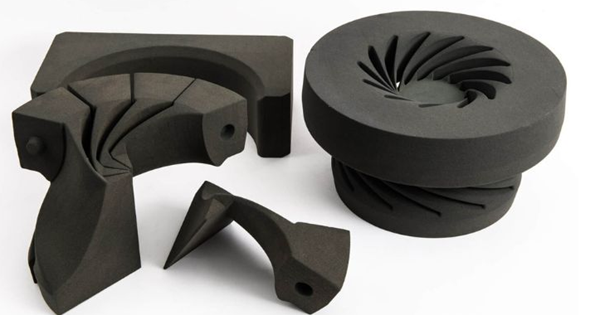

wheel3D printing mold on sand (Photo credit: voxeljet)
sand3D printer manufacturer
existIn the field of 3D printing, some manufacturers specialize in sand processing. The German company voxeljet is particularly renowned in this field. It offers a variety of 3D sand printing systems, including the VX 200, 500, 1000, 2000 and 4000 machines, which feature different sized print beds. In addition to voxeljet, we should also mention ExOne (acquired by Desktop Metal in 2021 but still active in the sand sector), also specialized in binder projection systems and one of the leaders in this field.
Even if the sandThe application range of 3D printing is narrower than that of resin, polymer and metal 3D printing, but it can meet specific needs. This is why more and more service providers are adding it to their offerings to better meet customer needs and help small foundries who want to revolutionize sand casting with 3D printing, but who do not have the resources needed to invest in a 3D sand printer factory themselves.
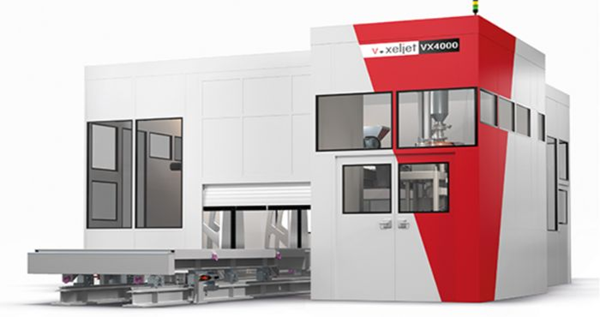

The voxeljet VX4000 is the largest sand 3D printer to date (Photo credit: voxeljet)
Source: 3dnatives
Daguang focuses on providing solutions such as precision CNC machining services (3-axis, 4-axis, 5-axis machining), CNC milling, 3D printing and rapid prototyping services.
